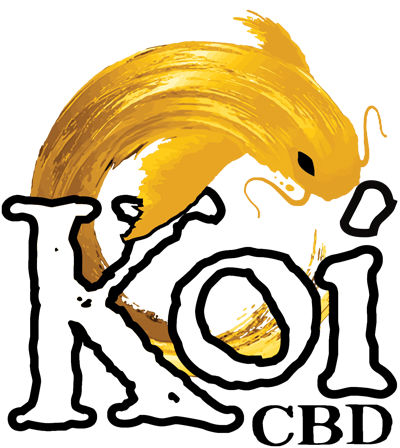CBD Oil has recently made headlines because of its impressive health benefits. Even though we still need more clinical evidence, many who have tried it testify of its effects on general well-being. It's among those substances with "superfood" effects.
This article will dive deeper into CBD's details. Continue reading for more on how processors make CBD Oil.
Cultivation
As you may be aware, CBD oil comes from the industrial hemp plant (A variant of
Cannabis sativa). Most people tend to confuse Hemp with Marijuana (The most popular Cannabis plant). Even though they both have cannabinoids and terpenes, Marijuana has significantly higher concentrations of Tetrahydrocannabinol (THC)-The compound responsible for highness.
In simpler terms, the industrial hemp plant is specifically cultivated for CBD production with little to no traces of THC.
The UK, US, and EU regions strictly regulate hemp cultivation. Before cultivation, they prepare and test the soil for herbicides, pesticides, and heavy metal concentration. This is because Hemp is a highly absorbent plant. If they are not careful, the harmful contaminants might feature in consumer products.
After they have approved the soil, they sow certified hemp seeds. Fortunately, the plant doesn't require much space. You can plant them 4-inches apart. It's an ideal economical crop that allows for greater yields with less land use.
After around 120 days, the hemp plants are mature and ready for harvest. However, before the official harvest, the cultivators will test a sample from each plant to ensure each plant has proper THC levels with as few contaminants as possible.
Note: All hemp products in the UK must contain less than 0.2% THC. Otherwise, they are illegal.
Harvesting, Curing, and Decortication
Buds, flowers, and stems have the highest concentration of cannabinoids and terpenes. After harvesting them, they go through a 4-week curing process that involves exposure to dry air in a well-ventilated area. It's similar to the drying process that green tea undergoes.
Curing is crucial because its increases the flower's shelf life. Additionally, it helps remove some of the sourness consistent in green plants.
After drying, the flowers and stems go through the retting process. It involves soaking the harvest in water. After a couple of days, the woody flowers, stems, and buds will be broken down into soft fibres.
Finally, the softened harvest goes through the decortication process. It involves separating the fibres from their wooden structure. At this point, it's now ready for CBD extraction.
Why not also read:
CBD Oil Laws in the UK
CBD Extraction
There are different techniques for CBD extraction. The choice depends on the manufacturer's resources. As we'll explain, some methods are more efficient and costlier than others.
Oil extraction: It's the simplest CBD extraction technique. Therefore, it's common among small-scale and home-CBD oil producers. Unfortunately, it's not ideal for commercial production. Even though you get CBD oil, it will have less concentration. On top of that, it will have a relatively short shelf-life.
Liquid-solvent extraction: It's the second most popular CBD extraction technique for intermediate and medium-scale producers. As you might have guessed, it involves solvents like ethanol and propane. The boiling solvent strains and purges the hemp fibres, leaving behind a CBD-rich concentrate. Liquid-solvent extraction is better than oil extraction. However, it's still not the most accurate CBD extraction method.
CBD CO2 Extraction: This is currently the most efficient extraction technique that ensures high CBD concentration with little contamination. Also, it's kinder to the environment. It doesn't produce much waste. Unfortunately, it requires costly equipment and professional expertise-This makes it ideal for large-scale industrial producers.
Decarboxylation
Decarboxylation follows extraction. It’s a crucial procedure that unlocks CBD’s effects and benefits. Specifically, it converts phytocannabinoids into active ingredients that can influence the human body.
Usually, the producers will take the extracts to specialised CBD labs with the necessary equipment and staff.
Note: Not all brands go through with this procedure. It’s why some CBD products are more effective than others of the same type.
Purification
Proper C02 extraction produces the purest CBD oil. However, there is still the chance of contamination. Some brands apply secondary purification processes to ensure the highest quality possible.
Winterization is the most popular purification process. It removes unwanted substances like fats, chlorophyll, lipids, waxes, and other contaminants. All these substances make CBD's absorption relatively difficult.
Terpening and Oil-inclusion
"Terpening" is also known as Terpene Enriching. It's a process that involves adding natural terpenes to pure CBD extract. Terpenes are crucial for the "Entourage Effect" necessary for CBD products.
Oil inclusion involves adding full-spectrum CBD extract to carrier oils, like MCT and hemp seed oil. These oils contain natural saturated fats that make CBD absorption easier. They also raise CBD's bioavailability.
Third-party Testing and Packaging
Third-party testing is crucial. As a customer, only buy from brands that do it and offer subsequent Certificates of Analysis (COA). It's a procedure that involves testing a sample of each batch for contaminants and overall CBD concentration. Not only does it help check if the products are safe for use, but it also provides information that helps customers manage their CBD consumption.

